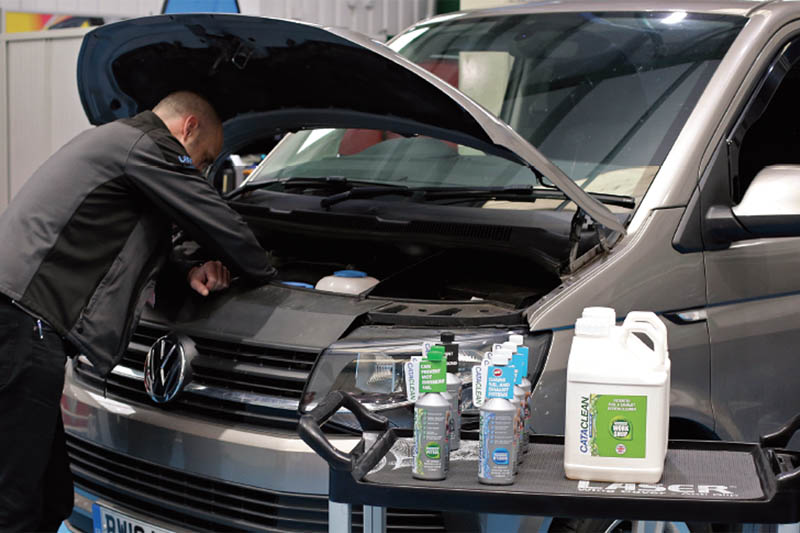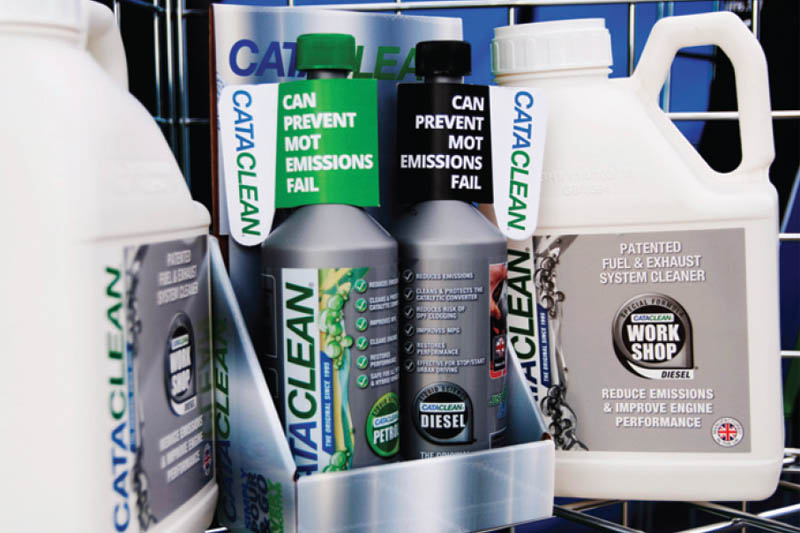
Ignoring the fuel and exhaust system can have negative consequences on the environment, so Cataclean explains how to reduce emissions through maintenance and how it has helped companies to achieve this goal.
As we know, the internal combustion engine has not changed much since injection systems replaced carburettors. What has changed dramatically is the exhaust system, from the introduction of catalytic converters over 40 years ago, through to the more recent arrival of sophisticated EGR systems and the problematic diesel particulate filters (DPFs).
Due to the nature of what these emission-reducing exhaust parts do, they get dirty and are prone to clog and fail. Quite simply, regular Cataclean treatments at service and vehicle check intervals ensure these parts are clean and that they work better for longer. Numerous companies have seen the benefits of carrying out regular treatments.
Matt Cranny, Operations Director at ARI Fleet Management, comments: “Following the test period, the RAC concluded that the Cataclean treatment across the test vehicles improved the performance of the DPFs by 27%, reduced emissions across CO2/HC/NOx by 24%, and improved fuel consumption by 9.7%.”
Richard Dawson, Managing Director of Rogers Rescue, adds: “We use a Cataclean treatment on all 80 of our recovery vehicles every six weeks at the mandatory vehicle check to reduce unscheduled downtime and restore MPG.”

Cataclean prevents carbon build-up, a natural by-product of combustion and something which can cause problems in vehicles – this results in unnecessary downtime and decreased performance.
Added to the fuel tank, Cataclean does not alter the fuel composition, and it is carried with the fuel through the fuel system, cleaning carbon build-up as it encounters it. Cataclean’s cleaning formulation can clean fuel injectors, cylinder heads, intake valves, and oxygen sensors.
Upon combustion in the combustion chamber, Cataclean creates an acidic vapour containing carboxylic acids; these continue through the system to clean carbon from the exhaust, including the catalytic converter and DPF.
Marie Gosling, Service Manager for Sefton Council’s Fleet Management Service, explains: “As part of our vehicle maintenance programme, we are now using Cataclean products across our entire fleet to reduce emissions across the borough of Sefton.
“As well as extending the operational life of the fleet, we also have the added benefits of saving on fuel and having more efficient vehicles, which will also hopefully reduce maintenance costs going forward.”
Ensuring the fuel and exhaust system is clean can produce numerous benefits, such as reduced emissions, restored performance, and improved fuel economy. A cleaner fuel and exhaust system can also prolong the life of vehicle components.
“The introduction of the bulk Cataclean five-litre variant has been very popular; it reduces the cost of a Cataclean treatment for a workshop. This has encouraged workshops to utilise Cataclean’s benefits as a maintenance product, as well as a distress product when a vehicle has failed its MOT on emissions,” highlights William Jones, Sales Director for Cataclean.








